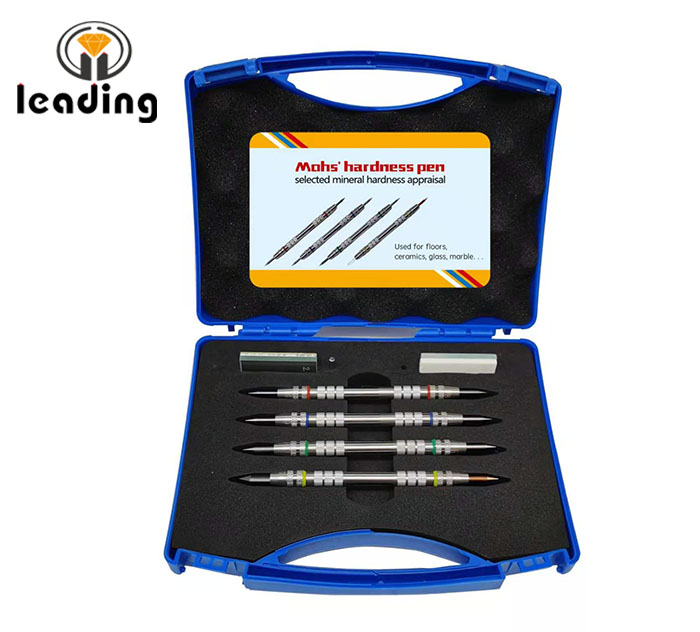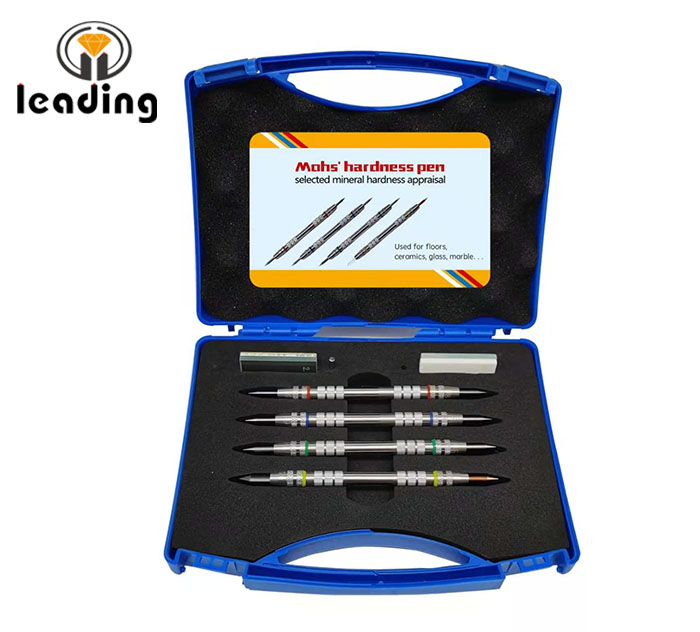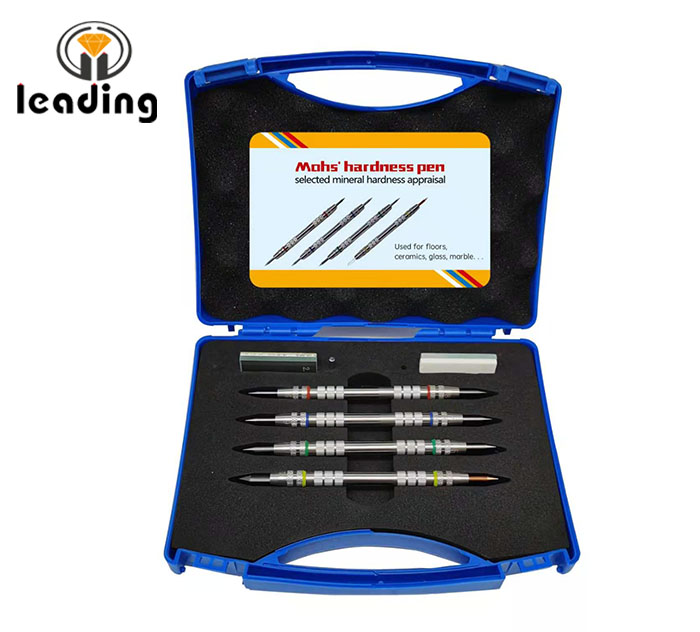Moh's Hardness Testing kit will save you time and money. The kit helps you determine what type of concrete you are dealing with. Concrete is made up of various elements of different hardness and densities that vary from region to region. Use of these picks is limited to providing a general guide for surface harness. Then choose the right diamond for the job and save in labor and materials! This kit will pay for itself over time!!
What is included in the Mohs' Hardness Test Kit - Industrial version?
* Molded Plastic Case to withstand rugged use in an industrial environment
* Non-tarnishing Nickel-Plated Brass Pin Vise Holders for the Hardness Points
* Customized Instructions for Use on Industrial Materials
* This version of our Kit is optimized for Concrete Hardness Testing
* Customized Hardness Tables that cover the range of common materials
* Four double-ended picks with eight points comprising 2,3,4,5,6,7,8, and 9 on Mohs’ hardness scale, as shown above.
* Two Hardness Plates (of Mohs' hardness of 3.5 and 5.5
* A 100 grit Grinding Stone to keep the points sharp.
* Rugged and compact molded Plastic Case.
* Hardness Table for 80 common Materials.
* Complete Instructions, customized for Industrial applications
Steps to testing:
1. Start with a pick with a higher number than the surface being tested is believed to be. For beginners, start with pick #9 until more experienced and you have a general feel for the concrete in your area.
2. Grasp the pick in the same fashion as you would a pen and place the edge of your palm on the floor as if ready to write.
3. Reach forward with the pick and draw a 2” line towards you using the same downward pressure you would use if writing with a pen on paper.
4. You will notice the #9 pick will easily produce a scratch. Subsequent picks, will leave less and less of a scratch. Do NOT force any of the picks to scratch.
5. Continue down through the scale until you encounter the pick that will not scratch the surface. For example if #5 leaves a scratch but #4 does not, then the floor is about 4.5 on the MOHS scale.
6. Sometimes the metal from the pick will lay down and look like a scratch. A magnifying glass will help you to see the scratch or line left by the pick.
7. If you are unsure whether the pick left a scratch, lightly drag the pick perpendicular across the first line. If there is a scratch, you will feel the pick drop into the grove.
8. Always test in different locations of the floor in order to get a more accurate result. There may be more than one pour present in different areas of the floor, which may give widely varying results
9. Be alert for signs of micro-topping, self leveling or filling/patching compounds. Look at different colors, textures or possible edge delamination for clues.
10. To increase your knowledge of the aggregates used in your area, do a scratch test on individual stones that are exposed during the grinding, polishing process.
11. The picks should always be sharp and in good condition. There is a small stone in the kit that can be used for dressing the tip.
12. The picks have extremely sharp points. Care should be used when handling them.
13. Never place a loose pick in any pocket or article of clothing.
14. It must be remembered that the picks and instructions are only a guide and do NOT cover every possible situation.













